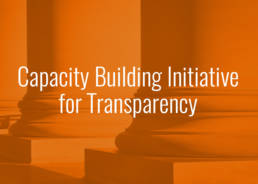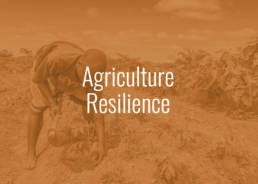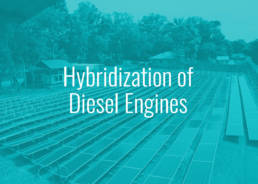Better NRG services
Promoting better access to modern energy services through sustainable mini-grids and low-carbon bioenergy technologies among Guinea-Bissau’s forest-dependent communities
Guinea-Bissau has one of the lowest electrification rates and highest electricity service costs in Africa. The country is completely dependent on petroleum products despite its own high energy potential, especially in terms of hydroelectric power. Energy use in Guinea-Bissau is roughly 0.3 tne per person per year, one of the world’s lowest. The national final energy consumption is characterized by the predominance of traditional use of biomass (up to 87.8%), followed by 11.7% from petroleum products and only 0.5% from electricity. The quantity of the biomass used is estimated at around 738,000 tonnes per annum. Guinea Bissau faces innumerable obstacles to adequate access to modern energy services. The production and distribution network is obsolete, the cost of electricity, despite a subsidy of $ 0.17 per kilowatt, is among the highest, the overall rate of electrification is lowest in Africa (11.5 %) and less than 1% in rural areas.
The Intended Nationally Determined Contribution (2015) of Guinea-Bissau targets to raise the country’s energy supply to 80% renewable energy by 2030 while increasing electricity access to 80%. The major GHG reductions outlines in the INDC will come mainly from the energy, agriculture and forestry sectors. Recently, the Government approved its National Action Plan for Renewable Energy, Energy Efficiency and the Agenda SE4All and also approved its adhesion/membership to the ARENA, SIDS DOCK Initiative and ISA (International Solar Alliance), aiming at reinforcing its move toward the above objective set up in the framework of Paris Agreement as well for the SDGs.

〰
Project Goals
This project will contribute towards that goal by promoting and adoption of low-carbon technologies for energy in forest-dependent local communities. These would include renewable energy-based mini-grids and bioenergy systems using resource efficient cookstoves. Four pilot mini-grids up to 2 MW under a public/private partnership business model are planned supported by the Government’s development programme.
Component 1: Policy and financial instruments and incentive scheme for renewable energy mini-grids and low-carbon bioenergy technologies
This component will develop two sets of policy and financial instruments and incentive schemes. It envisages the preparation and adoption of a comprehensive policy framework for the promotion of Renewable Energy (RE) RE–based electrification. The framework will complement existing policies on power sector development and rural electrification by putting explicit emphasis on, and providing more favourable conditions for, decentralized RE technologies. The policy framework will include specific timeframes, targets and roll-out plans for the development of mini-grids. The decentralized RE policy framework will also establish a cornerstone policy instrument (e.g. a financially viable tariff for RE-based mini-grids)and supporting policies and regulations, including, but not limited to, harmonized and simplified concession regimes and licensing rules for RE technologies, standardized PPAs, and land and water use rights for mini-grid projects.
Component 2: Capacity Building for RE-based mini-grid and low-carbon bioenergy system management
This component will address technical barriers to the implementation of RE-based mini-grids and low-carbon bioenergy technologies. First, the aim is to help the power utility EAGB and potential service providers upgrade their capacity for delivering turn-key solutions for RE and hybrid systems. Technical assistance will be provided to a number of competitively-selected local Small & Medium Enterprises (SMEs) through an open Call for Expression of Interest. An international technology transfer partner (an experienced SHP manufacturer) will be sub-contracted to deliver such assistance. Second, the project will build capacities of key actors of the bioenergy technology value chain: i.e farmers,craftsmen, retailers and end-users.
The component will also establish a national clearing-house mechanism for decentralized sustainable mini-grids and low-carbon bioenergy developers and national entities. Assistance will be provided to collect and present all essential information for potential RE developers, such as: a) prospective sites and their characteristics; b) the required process for permitting and licensing; c) policies and regulations governing RE project development; d) information about local technology service providers; and e) potential sources of financing and incentives.
Component 3: RE-based mini-grids and low-carbon bioenergy technologies roll-out
The expected outcome from this component is the improved confidence of communities, developers and potential investors in the technical and economic viability of RE-based mini-grids for rural electrification, local socio-economic development as an alternative solution to centralized grid-expansion schemes, and low-carbon bioenergy technology dissemination.
The project will aim at facilitating the roll-out (preparation and implementation) of staggered batches of 4 commercial RE-based mini-grid systems for a total of up to 2 MW of RE-based capacity. The average size of each mini-grid will be between 100 to 500 kW. The project will also facilitate the dissemination of 5,000 improved cook stoves and 50 improved kilns.
More Projects






